List of Exynos Chipset Used in Mobile Phones
Exynos refers to a chipset, also known as a System on a Chip (SoC), created by Samsung. This ARM-based chipset is produced by Samsung Semiconductor and is a crucial component in many electronic devices. Samsung mobile phones predominantly use the Exynos chipset. Nonetheless, other manufacturers, such as vivo have also adopted it.
The Exynos chipset made its debut in 2010 with the launch of the Exynos 3. This was the first chipset to be featured in the initial Samsung Galaxy S series. Following this, in 2011, Samsung introduced the Exynos 4210, which powered the Samsung Galaxy SII. Samsung has continually enhanced the Exynos series since then.
The naming of Exynos chipsets can be somewhat complex. Unlike companies like Intel and AMD, which have clear guidelines to help users understand their processor names, Samsung's approach to naming their chipsets is less straightforward.
Generally, an Exynos chipset is named 'Exynos' followed by a sequence of three or four numbers. However, Samsung hasn't provided a clear method to decipher these numbers, so it's tricky enough to understand what each represents.
To make it easier, we can categorize Exynos chipsets into three groups: the high-end or flagship category, the mid-range, and the entry-level. Each category serves a different segment of the market, so that there's a suitable option for various needs and budgets.
High-End Exynos Chipsets
In the high-end or flagship category, we find several Exynos chipsets that usually power Samsung's Galaxy S Series.
1. Exynos 2400
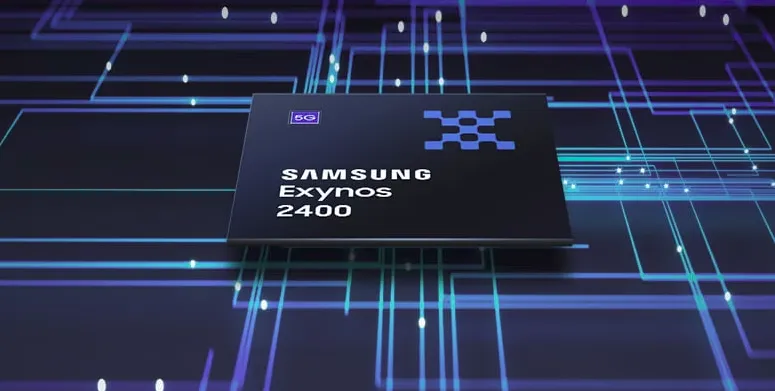
Exynos 2400 is the brain of Samsung Galaxy S24 and Galaxy S24+. However, in the US, Canada, China, Taiwan, and Hong Kong, these models feature the Snapdragon 8 Gen 3 chipset.
This chipset has an impressive 10 processor cores, the highest number Exynos has ever offered. These cores include one Cortex X4 prime unit at 3.21 GHz, five Cortex A720 cores (two operating at 2.9 GHz and three at 2.6 GHz), and four Cortex A520 cores at 2 GHz.
The Samsung Xclipse 940, a six-core GPU with a speed of up to 1,009 MHz, enhances its graphics capabilities. It represents the second collaboration between Samsung and AMD, built on the advanced AMD RDNA 3 technology, and supports ray tracing.
The Exynos 2400 is a step up from its predecessor, the Exynos 2200, which featured the Xclipse 920 GPU. Samsung says that both the CPU and GPU performance in the Exynos 2400 have seen significant improvements.
Another great feature is its use of Fan-out Wafer Level Package (FOWLP) technology. This technology allows for faster movement of electrical signals within the chipset that enhances efficiency.
Samsung particularly highlights the chipset's AI capabilities. The NPU component, responsible for AI processing, has reportedly improved its capability by up to 14.7 times. This is crucial as the Galaxy S24 and Galaxy S24+ rely heavily on AI for various features like Live Translate, Circle to Search, Chat Assist, and Generative Photo.
According to Nano Review, as of February 24, 2024, the Exynos 2400 achieved an impressive AnTuTu 10 score of 1,658,813. In Geekbench 6 tests, it scored 2210 in single-core and 7015 in multi-core scenarios.
2. Exynos 2200
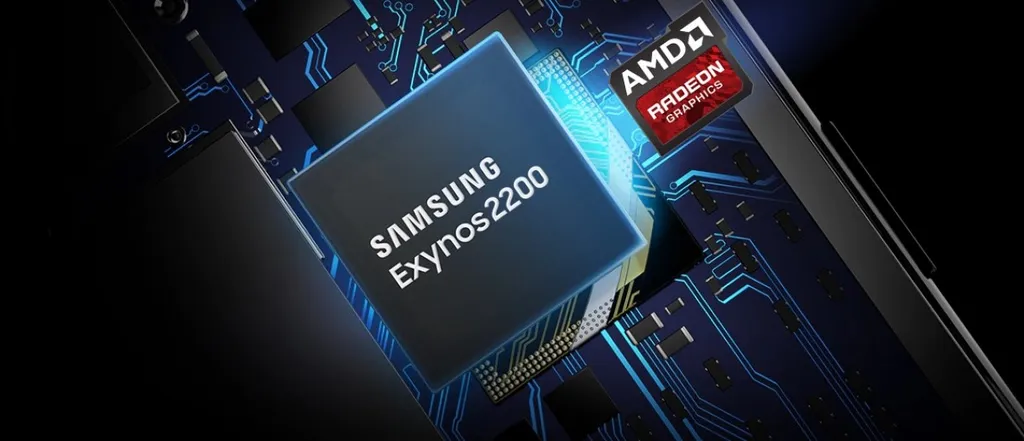
The Exynos 2200, a successor to the Exynos 2100, is created using a 4 nm fabrication process. This advanced chipset is designed with Extreme Ultra Violet (EUV) technology, making it a significant step forward in chip design.
There's considerable excitement around the Exynos 2200, especially domestically. This excitement stems from its development, a collaboration between Samsung and AMD.
AMD contributes a graphic processor, the Xclipse 920, to this chipset. This GPU, based on the RDNA 2 architecture similar to those in the PS5 and Xbox Series X, comes equipped with hardware-accelerated ray tracing and variable rate shading.
These features are highly anticipated, as the Exynos series is known for its processor efficiency and power-saving capabilities, while its graphics performance has been more standard in the past.
The Xclipse 920 GPU, with its RDNA 2 architecture, also found in gaming consoles like the PS5 and Xbox Series X, stands out for its advanced graphic capabilities, including hardware-accelerated ray tracing and variable rate shading.
However, the availability of the Exynos 2200 is limited. It's found only in the Galaxy S22 series sold in the European market. In contrast, the Samsung Galaxy S22 series outside of Europe uses the Snapdragon 8 Gen 1 chipset.
3. Exynos 2100
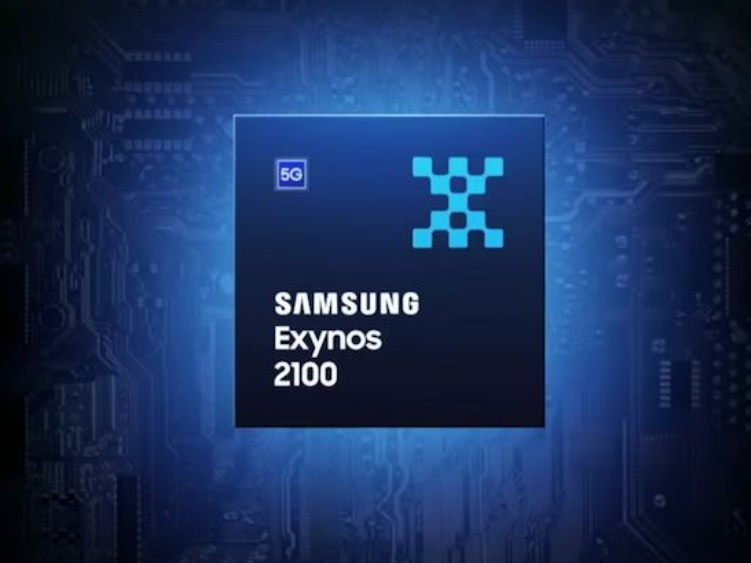
The Exynos 2100 powers the Samsung Galaxy S21 series, including the S21, S21 Plus, and S21 Ultra. This chipset is notable for its construction using Samsung's 5 nm EUV fabrication process. It has been widely praised for delivering quick and stable performance without overheating the phone.
This 5G-ready chipset has eight cores divided into three clusters. There are two Cortex-A78 processors at 2.8 GHz for rapid performance, one Cortex-X1 processor at 2.9 GHz for even faster performance, and four Cortex-A55 processors at 2.2 GHz.
The graphic processing unit in this chipset is the ARM Mali-G78 MP14, which offers improved performance over its predecessors.
A remarkable feature of the Exynos 2100 is its support for an image processor capable of handling up to 200MP resolution, making it the first chipset to support such high-resolution photography. In terms of performance scores, the Exynos 2100 reaches around 750,000 on Antutu version 9.
4. Exynos 990
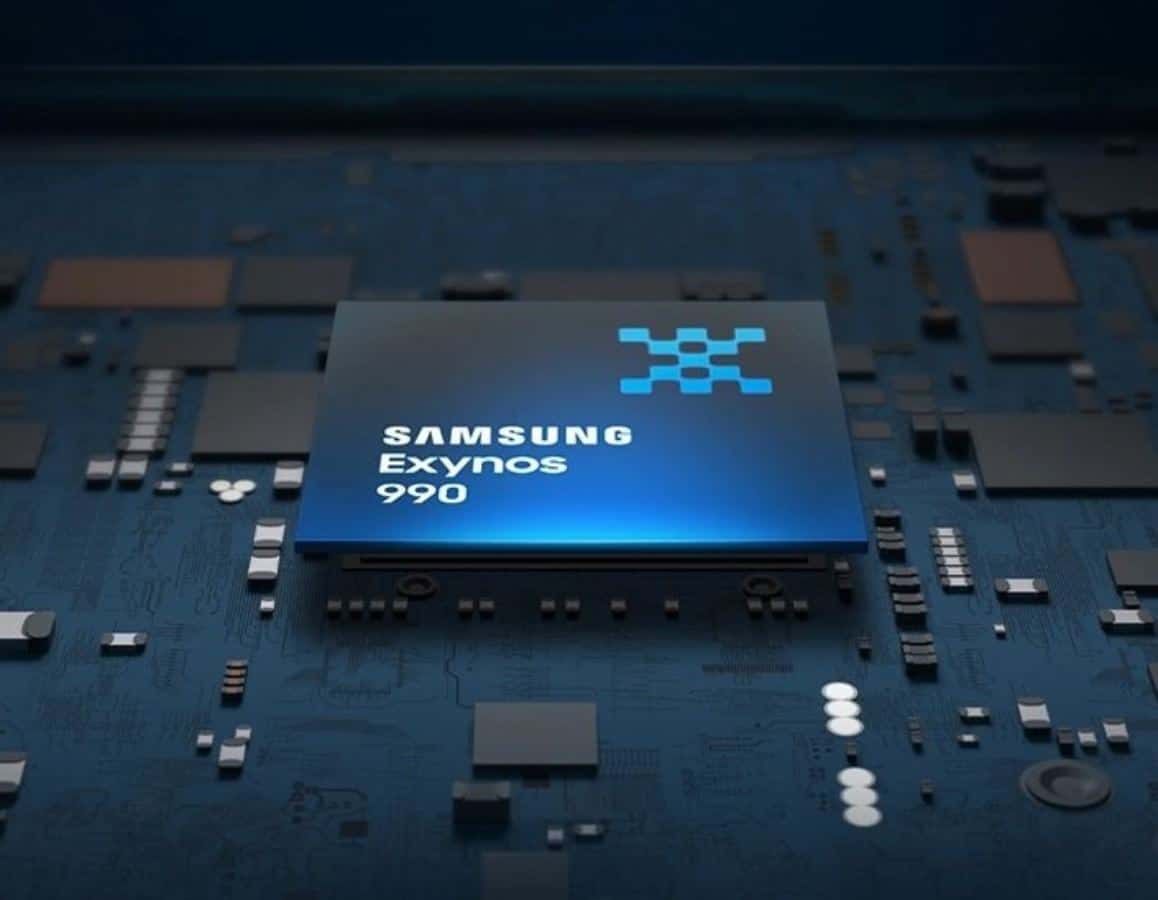
The Exynos 990 is another high-end chipset from Samsung built using a 7 nm EUV fabrication process. This chipset is organized into three clusters: two ARM Cortex-A76 cores for high performance, four ARM Cortex-A55 cores for efficiency, and two custom Exynos M5 cores.
This chipset is about 20% faster than its predecessor, the Exynos 9825, and features on-device AI capabilities managed by a dual-core NPU (Neural Processing Unit) and an ISP that supports up to 6 image sensors.
Additionally, the Exynos 990 includes the 5G Exynos Modem 5123, an integrated 5G modem, ensuring smartphones equipped with this chipset are 5G ready. However, in some regions where smartphones such as the Galaxy S20 series or Galaxy Note 20 feature the Exynos 990, the 5G functionality is not activated.
5. Exynos 9820
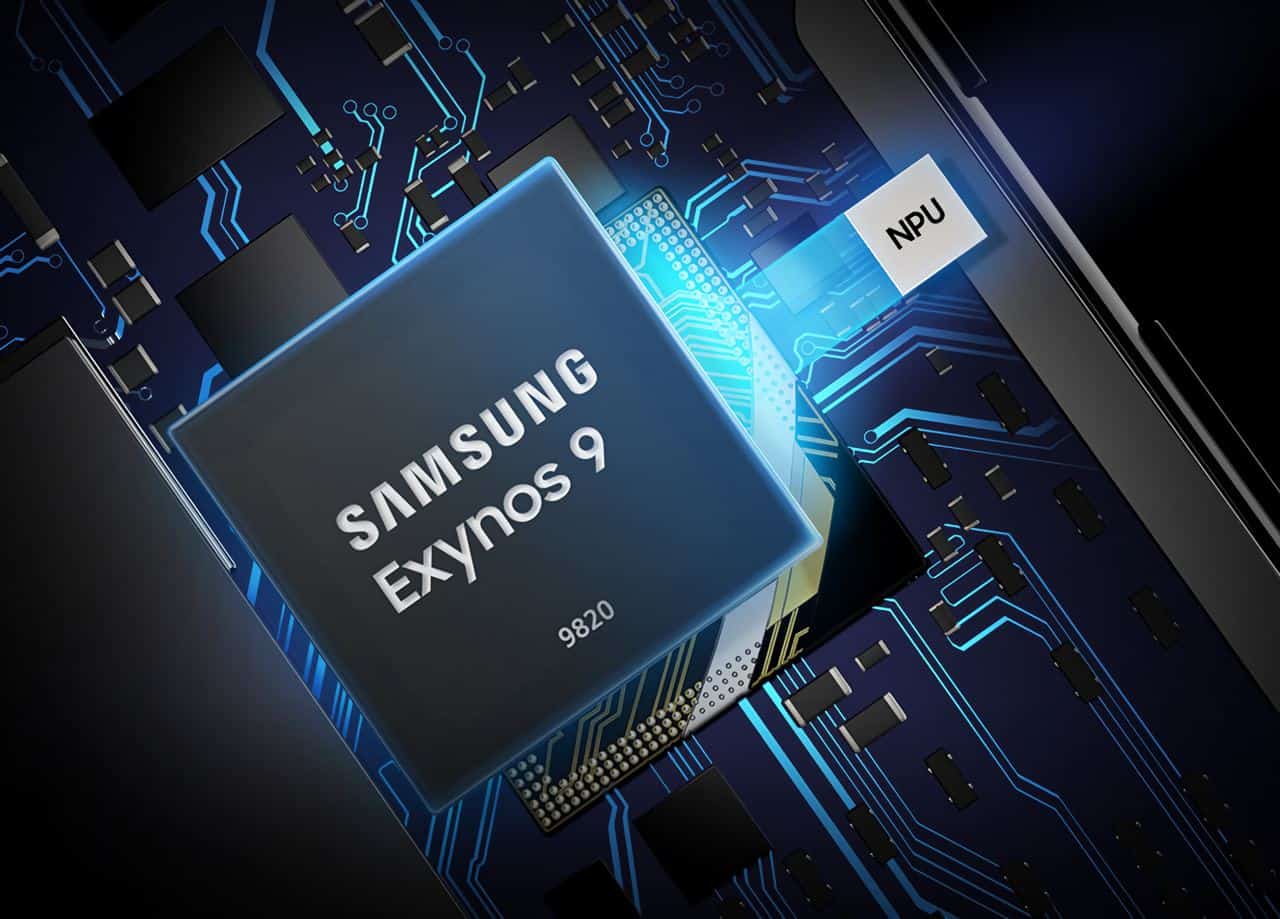
The Exynos 9820 powers the Samsung Galaxy S10 series and is expected to be featured in the Galaxy Note 10. Built using 8 nm fabrication technology, this chipset is known for enhancing the performance of the Galaxy S10 series. This is evident in the Antutu score of the Samsung Galaxy S10 Plus, which reaches around 340,000.
Samsung describes the Exynos 9820 as a fourth-generation processor, renowned for its efficient processing capabilities due to its custom CPU. This custom CPU consists of a unique 4+2+2 processor configuration.
This configuration translates to eight processors divided into three groups. The first group includes four Cortex A55 processors, each running at 1.9GHz for energy efficiency. The second and third groups consist of a 2.3GHz dual-core Cortex A75 and a 2.7GHz dual-core Exynos M4, respectively.
These latter two groups are specifically designed to cater to high-speed processing needs. In addition to these, the chipset also features the Mali-G76 MP12 GPU for graphics processing.
6. Exynos 9825
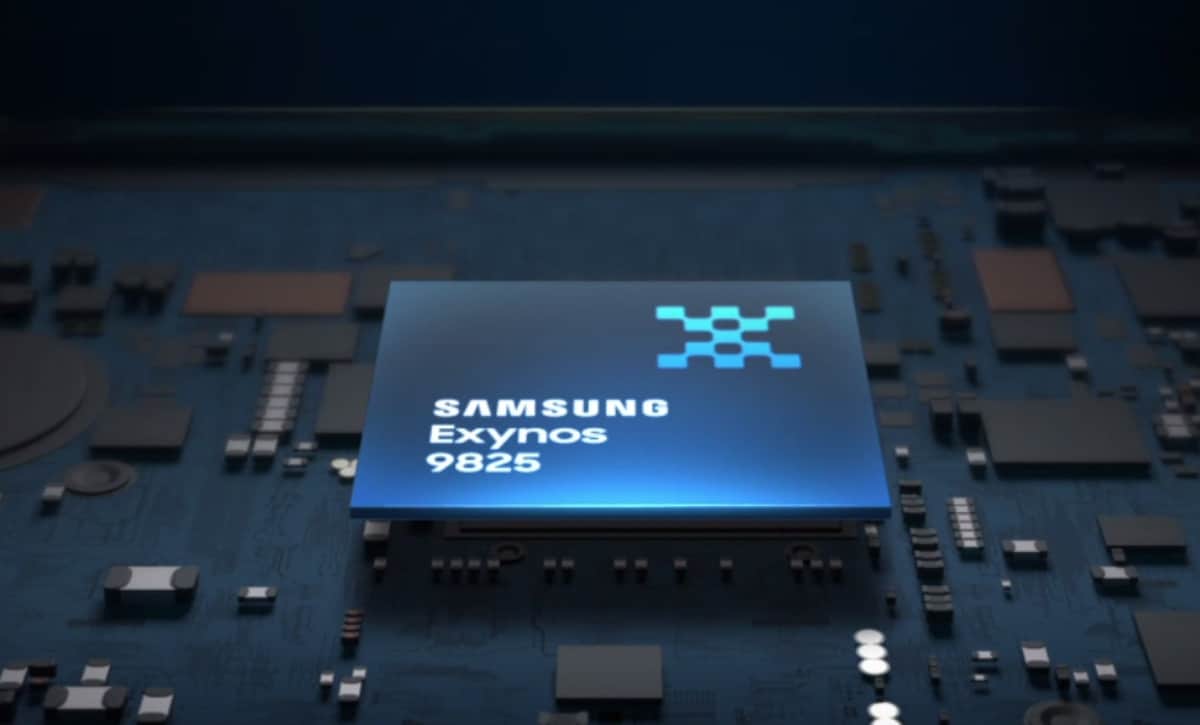
The Exynos 9825, an advancement of the Exynos 9820, utilizes 7 nm EUV fabrication technology. This chipset, which improves upon the performance capabilities of its predecessor, is used in the Samsung Galaxy Note 10 and Note 10 Plus.
It consists of three processor clusters. The first is a custom Samsung M4 cluster with two cores running at a speed of 2.73 GHz. The second includes two Cortex A75 cores at 2.4 GHz, and the third comprises four Cortex A55 cores operating at 1.95 GHz. For graphics, the Exynos 9825 is equipped with the Mali G76MP12, providing robust graphical support.
7. Exynos 9810

Prior to the release of the Exynos 9820, Samsung introduced the Exynos 9810, built using 10 nm fabrication technology. This chipset is used in high-end devices such as the Samsung Galaxy S9 series and Samsung Galaxy Note 9. Devices equipped with the Exynos 9820 typically score around 240,000 in Antutu benchmarks.
The Exynos 9810 features two main processor clusters. The first is the Exynos M3 with four processors, each running at 2.9GHz for high-speed processing. The second cluster consists of four Cortex A55 processors at 1.9GHz, designed for energy efficiency.
In terms of graphics, the Exynos 9810 includes a Mali-G72 MP18 GPU. It's also worth noting that the Exynos 9810, along with the Exynos 9820 and Exynos 9110 (used in the Galaxy Watch), are all based on the ARMv8.2-A instruction set.
8. Exynos 8895
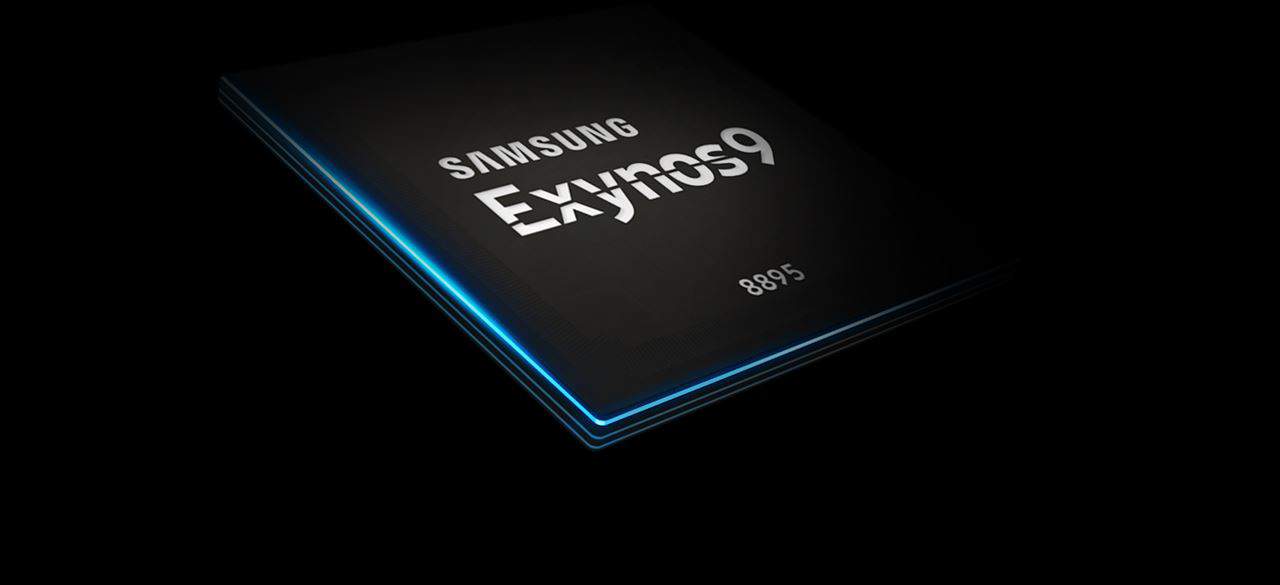
The Exynos 8895 chipset is found in the Samsung Galaxy S8, Galaxy S8 Plus, and Galaxy Note 8. These high-end models from 2017 are known for their robust performance, generally scoring in the 200,000 range on Antutu benchmarks.
This chipset, also utilizing 10 nm fabrication, comprises four Mongoose processors at 2.3 GHz and four Cortex A53 processors at 1.7 GHz. The graphics are handled by the Mali-G71 MP20 GPU. At the time of its release, the Exynos 8895 was highly capable, offering smooth gaming experiences and reliable overall performance.
Mid-Range Exynos Chipsets
Mid-range Exynos chipsets are commonly found in Samsung's Galaxy A and Galaxy M Series smartphones. While these chipsets may not match the performance of their flagship counterparts, they are still quite capable and meet the needs of most users effectively.
1. Exynos 1480
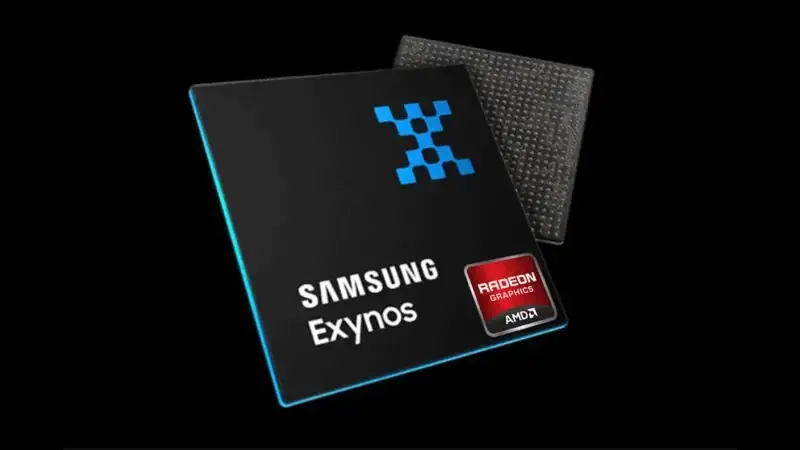
Exynos 1480 made its debut in the Samsung Galaxy A55. This chipset is manufactured using a 4 nm process, showcasing Samsung's commitment to advanced technology. It features an eight-core CPU with a blend of four Cortex A78 performance cores running at 2.75 GHz and four Cortex A55 efficiency cores at 2.05 GHz.
This CPU configuration is similar to the Exynos 1380, with the primary difference being an increase in clock speed. This increase, however, hasn't significantly boosted the CPU's performance capabilities compared to its predecessor, although the scores are still quite impressive.
On Geekbench, the Exynos 1480 has achieved a single-core score of 1127 and a multi-core score of 3090. For context, the Exynos 1380, which powers the Galaxy A54, scored 1108 in single-core and 2797 in multi-core tests.
One good aspect of the Exynos 1480 is its GPU. Breaking away from the typical Mali GPUs, Samsung has integrated the Xclipse 530 GPU into this chipset. Developed in collaboration with AMD and based on RDNA2 architecture, this GPU is capable of supporting ray tracing features. This makes the Exynos 1480 the first mid-range SoC from Samsung to offer this advanced graphics capability.
2. Exynos 1380

Samsung Galaxy A54 5G gets its power from the Exynos 1380, a step up from the previous Exynos 1280. This SoC, made with 5 nm EUV fabrication, has got more robust CPU performance cores, as well as an enhanced GPU.
Its CPU configuration includes four Cortex A78 cores running at 2.4 GHz and four Cortex A55 cores at 2.0 GHz. The GPU is a five-core Mali G68, clocking speeds up to 950 GHz. Samsung upgraded to the Exynos 1380 in response to user feedback about the Exynos 1280, particularly regarding its underwhelming performance in gaming scenarios.
In addition to the CPU and GPU, improvements were also made to the AI processor (NPU) and Image Signal Processor (ISP). The NPU now operates at a rate of 4.9 trillion operations per second. The upgraded ISP supports camera resolutions up to 200 MP.
Performance tests by Yuga Tech revealed that the Exynos 1380 in the Galaxy A54 scored 504,935 on AnTuTu 9. In GeekBench 5 tests, it achieved a single-core score of 769 and a multi-core score of 2665.
3. Exynos 1330

The Exynos 1330 made its debut in early 2023, powering the Samsung Galaxy M15 5G. Produced using 5 nm fabrication technology, it's quite similar to the Exynos 1280 but comes with a slightly less powerful GPU.
While the Exynos 1280 features a four-core Mali G68 GPU operating at 1 GHz, the Exynos 1330 uses the same GPU model but with only two cores and a clock speed of 950 MHz.
The CPU composition remains the same, sporting two Cortex A78 performance cores at 2.4 GHz and six Cortex A55 efficiency cores at 2.0 GHz. The focus of the Exynos 1330 isn't so much on sheer performance, but more on multitasking capabilities and energy efficiency.
This efficiency can be seen in the Galaxy M15 5G’s battery life. The phone lasted an impressive 27 hours and 9 minutes when playing 1080p videos locally.
The Exynos 1330 supports both LPDDR4X and LPDDR5 RAM, along with storage options up to UFS 2.2 or UFS 3.1. It also supports cameras with up to 108 MP resolution and can record videos in 4K at 30 frames per second.
In performance testing, it is known that the Exynos 1330 achieved an AnTuTu 9 score of 401,865. On GeekBench 5, it scored 759 in single-core and 2057 in multi-core tests.
4. Exynos 1280
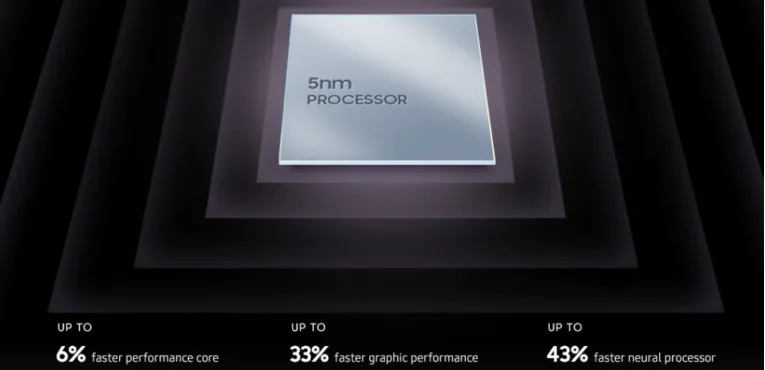
Exynos 1280 is a 5G-enabled chipset that features a combination of six ARM Cortex A55 processors operating at 2.0 GHz and two Cortex A78 processors at 2.4 GHz.
Its graphics are powered by the Mali-G68 GPU, which has four cores and can reach speeds of up to 1,000 MHz. This 5 nm fabrication chipset supports 5G networks, along with Bluetooth 5.2, Wi-Fi 6, and GPS.
Smartphones like the Samsung Galaxy A53s 5G, Galaxy A33 5G, and Galaxy M53 5G are equipped with the Exynos 1280, ensuring they're well-suited for today’s connectivity demands.
5. Exynos 1080
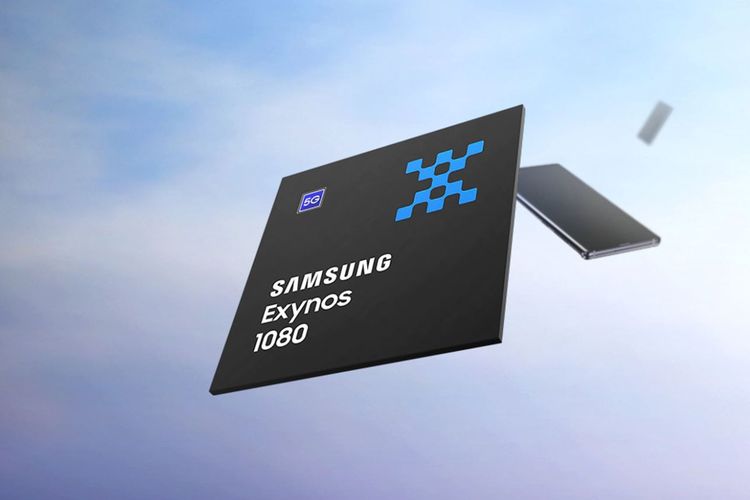
Exynos 1080 is another Samsung creation that's uniquely not used in Samsung's own mobile phones. Instead, it was first integrated into the vivo X60 and vivo X60 Pro, targeted specifically at the Chinese market.
Constructed with a 5nm EUV process, Samsung claims this chipset provides a 50% increase in single-core performance and double the multi-core performance compared to its predecessor.
The Exynos 1080 consists of four cores divided into three clusters: a 2.8 GHz Cortex-A78 for the highest speed needs, two 2.6 GHz Cortex-A78 processors for rapid performance, and four 2.0 GHz Cortex-A55 processors for energy efficiency. The ARM Mali-G78 MP handles the graphics.
This chipset, which scores around 600,000 on Antutu version 9, includes an NPU capable of processing 5.7 TOPS and supports LPDDR5/LPDDR4x RAM and UFS 3.1 storage. Besides supporting 4G and 5G networks, its 4G capabilities feature LTE Cat.18 networks with a downlink speed of 1.2 Gbps and an uplink of 200 Mbps.
6. Exynos 980

Exynos 980 chipset is the our next list that has an 8 nm fabrication technology. Not limited to Samsung's own range, this versatile chipset also powers smartphones from other brands, including the vivo X30, vivo X30 Pro, and vivo S6.
Samsung's lineup that features the Exynos 980 includes impressive models like the Samsung Galaxy A71 5G and Samsung Galaxy A51 5G. One great aspect of these phones is their 5G capability, enabled by an integrated 5G modem within the Exynos 980 chipset.
For its structure, the Exynos 980 comprises two sets of processors. The first set includes 2 Cortex-A77 cores, each running at 2.2 GHz for high performance, complemented by 6 Cortex-A55 cores at 1.8 GHz, optimized for energy efficiency. For handling graphics, it uses a Mali-G76 MP5 GPU, ensuring smooth and vibrant visual experiences.
Moreover, the chipset is outfitted with DSP and NPU that can enhance its AI processing prowess. It also accommodates high-resolution photography, supporting either a 108 MP sensor or a dual 20 MP camera setup.
For video enthusiasts, it is capable to record in 4K at a fluid 120 frames per second, making it a powerhouse for multimedia content creation.
Entry-Class Exynos Chipset
Exynos chipsets in this category are typically found in budget-friendly phones. Let's take a look at some examples.
1. Exynos 850

Samsung Galaxy A13 and Galaxy A14 LTE are two models equipped with the Exynos 850 chipset. This chipset isn't known for top-tier performance, which makes sense as it doesn't have any high-performance cores in its CPU.
It uses eight Cortex A55 cores, each running at 2.0 GHz. Even when compared to other entry-level chipsets, the Mali-G52 GPU, which powers the Exynos 850, is pretty standard. Nonetheless, the Exynos 850 shines in multimedia handling and battery life efficiency.
The image processing capabilities of its ISP are quite impressive. This can be seen in devices like the Galaxy A14 LTE, which can capture sharp, vibrant images with minimal noise. Its battery efficiency is a result of modest hardware demands combined with the modern 8 nm FinFET fabrication process.
Samsung Galaxy A14 with the Exynos 850 chipset could last for 18 hours. This endurance was measured while playing local videos at 1080p resolution.
The AnTuTu benchmark score for this chipset is 137,362. In Geekbench 5, it scored 179 in single-core and 1108 in multi-core performance.
In conclusion, Exynos chipsets are more commonly found in high-end smartphones. However, there's a growing trend for these chipsets to be included in mid-range and entry-level phones as well.
I hope this overview can give readers a clearer understanding of the Exynos chipsets, their capabilities, and how they're used across different smartphone tiers.
